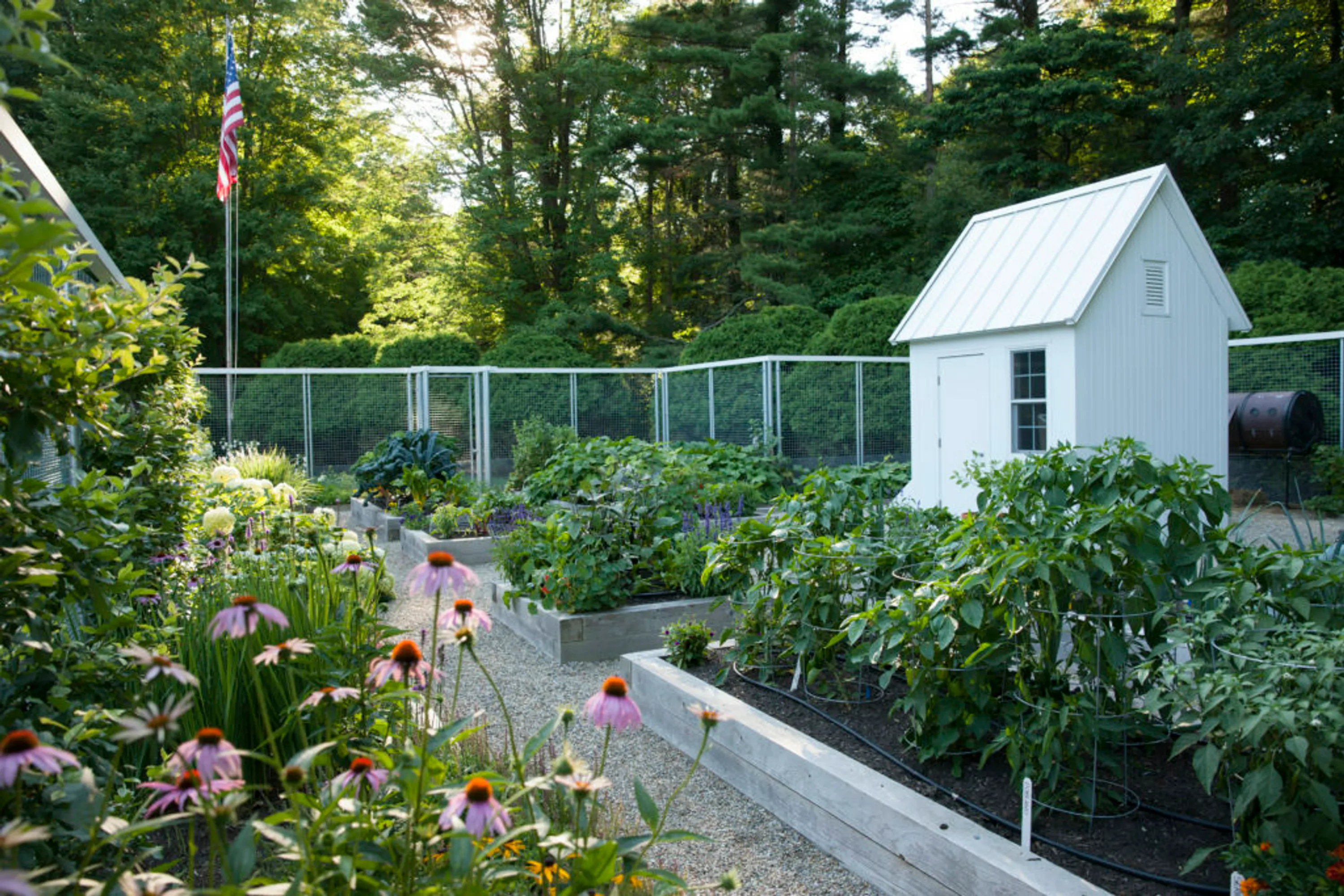With the passion for vegetable gardening at a nationwide high and the popularity of publications like Organic Gardening Magazine highlighting what can be done without pesticides, we asked Jeanne Nolan, owner of The Organic Gardener, to post thoughts about her recent experience with the organic garden designed in collaboration with one of our residential clients. Clearly, she knows what she’s doing – here is a photo of the garden she writes about:


This southwest Michigan project gave me the opportunity of working with an enthusiastic gardener and Hoerr Schaudt. It’s beautifully situated within a site of a prairie under restoration. It only makes sense to treat this land appropriately by providing organic compost and locally grown organic plants, and continue care with natural fertilizers and other materials.
I’ve enjoyed the journey, from the initial site visit to determine the appropriate garden site based on sun exposure, to the present-day on-going maintenance, and educating the homeowner in the art of growing organic vegetables. My role was to determine the raised bed planter sizes and materials, path widths, coordinate the irrigation system requirements, and select the appropriate plant materials. I worked closely with the homeowner, whose goal was to grow unique vegetable varieties not readily available at local markets.
The garden provided a few surprises such as the tomato hornworm on the many varieties of tomatoes that were planted. I have never seen this in 7 years of gardening in the Chicago area — I only witnessed this during my time spent on rural organic farms, so this site’s location in Michigan’s countryside makes perfect sense for this pest to make an appearance! The solution is to apply organic pesticides and handpick these large, 3” long horned caterpillars off the plants.
There are at least 28 different types of edible plants in this garden, but within each type there can be several varieties being grown. For example, there are four types of beets: Bull’s Blood, Touchstone Gold, Forano, and White Goblet. Other varieties of vegetables include 5 types of peppers, 4 types of potatoes, 5 types of basil as well as 12 other types of herbs, and bramble fruits including blackberries and red and black raspberries. We planted the garden as early as we could, in mid-June. This is considered a late start, so we’re looking forward to growing many of the delicious cool weather crops next year starting in March.
If you’re interested in starting your own organic garden, I suggest the following tips:
- Start with well-sifted organic compost, preferably in a raised bed (12” depth or higher).
- If the raised bed is made of wood, make sure to use untreated cedar timbers.
- Use locally grown, organic plants.
- To avoid using chemically based fertilizers and pesticides, use the “companion plant” method of designing your garden layout, i.e., pairing plants that naturally complement each other in many ways. These include: enticing good insects to the garden, deterring the bad bugs, helping to prevent diseases, and helping to increase the harvest yield. A well-known companion plant combination is tomatoes and basil. This is a powerful mix, as the basil helps the tomatoes to overcome both insects and disease, and also improves the growth and flavor.
- Use a drip irrigation system with an automatic system for consistent, even watering.
Below is a photo of the garden during construction that illustrates a few of these tips: